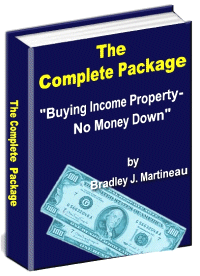Location is of absolute importance to value in real estate, both today and in the future. Start checking out different neighborhoods to gain a sense of what properties are worth in different parts of town. In very little time, you will become an expert on estimating fair values for property simply by driving around and comparing open houses to each other.
You will notice that location plays perhaps the greatest role in determining value. That will be apparent. However, several other conditions will also affect value in the neighborhood. These include:
1. Changing crime level. There is a direct correlation between crime trends and housing values. When crime is on the rise, families move away and more properties go on the market, increasing the supply and reducing overall values of other homes. When a previously crime-ridden area changes in a positive way, the area becomes more desirable. People start fixing up their properties and more people want to move in. This creates new demand and prices rise.
As an investor, vou have limited resources beyond supporting law enforcement and forming neighborhood watch programs to help control crime. Being aware of which neighborhoods are going through transitions!in either direction!will help you to select properties wisely and to maximize the potential for growth in market value.
2. Construction activity. When you see an increase in new home construction activity, that is usually a positive sign, especially if you already own property in the area. Construction is a symptom of growing demand. That also indicates that property values are on the upswing. It is unusual for builders and developers to undertake a high volume of construction in weak markets; the opposite is true. If you want to spot potentially positive neighborhood conditions, construction activity is one very visible sign.
3. Improvement and remodeling activity. Closely related to construction of new housing is a volume of activity in improvements and remodeling. That, too, is a sign of increasing property values. People tend to invest more money in their homes when those homes are rising in value, for the same reasons that homeowners do not invest when properly values are falling. High levels of remodeling also might be a sign of turnover from an older generation to a younger one. That is a positive trend because new owners coming into the area mean
revitalization, which is also good for property values.
4. Physical appearance- Neighborhoods vary in their general appearance!for good reason. Every neighborhood has its own character, and the impression defines that neighborhood as well as property values. Appearance includes the details such as lawn maintenance and condition of homes!roofs, paint jobs, and other cosmetics. It also extends to whether the streets have sidewalks, night lighting, proper signaling at intersections, and so. It is the combined impression of homeowner maintenance of individual properties and local government maintenance overall.
5. Change in zoning. When zoning is changed in an area, the result can be dramatic changes in land values. If the zoning change is bad for residential neighborhoods, that will be reflected in declining housing values. For example, if the county puts a road through die neighbor-
hood and changes a previously residential street, mixed commercial use, you may expect the residential value of homes on
that and nearby streets to fall. The neighborhood loses its value as a residential site. (It is interesting to note, however, that the potential commercial values on such a street may be far greater than the previous residential values. A zoning change
often involves devastating one land use interest while delivering profits to another.)
Before buying property, gel a copy of the neighborhood plan from your local planning department and find out what plans are in the works. If your government is planning big changes in the area you are considering, you should find out what those changes will mean before you buy.
6. Level of enforcement of existing zoning laws. Some cities and counties are very strict about
establishing zoning rules and enforcing them. They scrupulously prevent encroachment of one land use upon the zoning of another. However, in some areas, the zoning is more loosely defined and means much less, and the local government may not have the budget, the will, or the inclination to strictly enforce the rules. If your area allows mixed-use zoning, that could be a poor sign for future market values!depending on what the mixed zone has in it and how it operates. Some people miss the old neighborhoods with comer stores and service stations, versus today's highly planned shopping malls surrounded by carefully mapped out residential-only developments. An old-style charm could add a lot of appeal. But if mixed-use zoning is abused, residential uses can suffer, resulting in lower market values.
7. Changing demographics. A stable neighborhood can change very suddenly, due to unexpected shifts in the population, job market, and other outside influences. For example, if your town has one major employer and that plant closes down, all of those jobs will be lost, too. That will have an immediate effect on residential values, because families will be forced to move to wherever the jobs are. When a new employer comes to an area, that can have the effect of causing a rapid increase in housing prices, a reflection of demand. Study the current demo graphics for important indicators, employment and population being foremost.
Do you own real estate articles or stories and want to share with other investors?
You have chance to win
$100 Amazon Gift Certificates. We will give
away 3 prizes for top authors each month!
Email your articles or stories to:
articles@buyincomeproperties.com
© Copyright 2001 - 2010 by
BuyIncomeProperties.com

Visit
Real Estate Forums
for every real estate investing topics!
Enter Here
Top of Page

